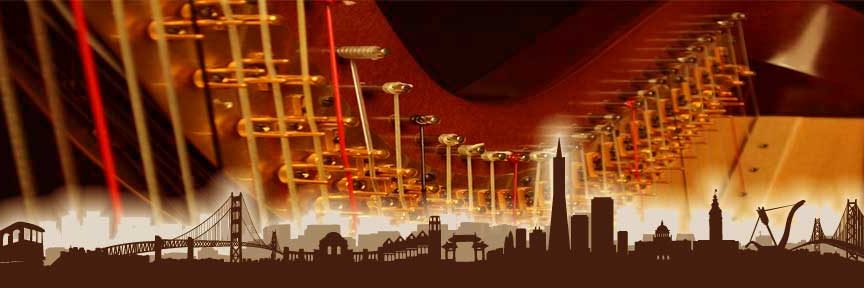The Firehouse Arts Center will present the winners of the Northern California Harp competition on June 2, 2013 at 2pm. This competition is named after Yvonne La Mothe Schwager, whose bequest to the Bay Area Chapter of the American Harp Society will fund this bi-annual event for many years to come.
This year, the competition will be held at the San Francisco Conservatory on May 26, with about 30 competitors signed up to audition. There are five categories with different repertoire requirements, ranging from below age 9 to age 22.
Yvonne La Mothe Schwager was a Berkeley harpist who quietly made things happen on an international level between 1950 and 1966. Under her stewardship, the Northern California Harpists’ Association, a precursor of the American Harp Society, gave awards to many composers for new pieces for the harp, or for harp with ensemble, some of which became instant hits. Recognizable composers with whom she worked were Marius Flothuis from the Netherlands, the New York critic Virgil Thomson, Josef Tal from Israel or Gerardo Gombau from Spain. The most performed winning work ever must be English harpist David Watkins’ Petite Suite, which includes the famous Fire Dance.
For the youngest harpists, the repertoire consists mainly of works written by well-known harp pedagogues, including Linda Wood Rollo and Nancy Gustavson from the South Bay, and French harp composer Bernard Andres. Salzedo’s arrangement of a Haydn Theme and Variations and Quest by flutist-composer Gary Schocker also figure prominently among pieces selected, as they are works required for the national competition.
In the medium and advanced categories, Eolian Harp by Godefroid, Impromptu by Glière, The Colorado Trail by Grandjany, Russian Toccata by Slonimsky (the author of the Baker’s Biographical Dictionary of Musicians) and the Fauré Impromptu were chosen more prominently by the competitors.
So, if you love harp music, be prepared to hear many gorgeous strains from this entrancing instrument both modern and ancient, simple and complex. There are harps in every world culture, from Antiquity to the present time, from the Near East to Africa and Latin America. yet it is in Europe, at the beginning of the 19th century that Erard, the inventor who perfected the piano also gave the harp its greatest gift, the ability to play in all keys. This allowed the harp to become an established member of the symphony orchestra, and to serve as a unique conduit for solo performance, with an expressive ability surpassing that of the ubiquitous piano.
For more musical information, please contact dominiquepiana@comcast.net.
Additional competition and recital information
